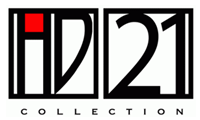Product Description
Flavio Poli / Seguso Vetri d’Arte Brown Murano Art glass vase c. 1950’s


FLAVIO POLI (1900-1984) Italy
SEGUSO VETRI D’ARTE Italy
Vase c. 1950’s
Asymmetric vase in a dark brown Murano glass cased inside with a layer of pale green and clear glass
H: 10 1/2″ x W: 5 1/2″ x D: 2 3/4″
Price: $4,000
Designer, businessman, ceramic artist. Born in Chioggia, he attended the Istituto d’Arte di Venezia and began work as a designer in ceramics. in 1929 he switched to glass and for Libero Vitali’s I.V.A.M. he designed animals, splendid Novecento-style nude figures in massiccio glass, as well as bowls and urns with figures resting on the inside, on lids or as handles. He subsequently collaborated with the Compagnia di Venezia e Murano, with the furnace of Mario and Lino Nason and with the engraver Gino Francesconi. in 1934 he accepted the artistic direction of Barovier, Seguso & Ferro, later to become Seguso Vetri d’Arte, and became partner three years later. Together with the master of the principal team Archimede Seguso, Poli was the author of grandiose lighting installations, of corroded vessels, of sculptures in bulicante glass, of animals in massiccio glass shaped while hot, productions which represented a milestone in the development of Murano glass. At the height of his artistic maturity, in the years between 1950 and 1960 he designed a series of sommerso glass pieces in a Nordic style, essential forms and sharp cold colors, which were awarded prestigious prizes (Compasso d’Oro). After leaving Seguso in 1963, between 1964 and 1966 he organized the artistic glass division at the Societˆ Veneziana di Conterie e Cristallerie.
Flavio Poli / Seguso Vetri d’Arte Brown Murano Art glass vase c. 1950’s
Rococo Revival, 19th Century
Wine Ewer c.1895
Silver-plate highly stylized classical ewer with various etched and applied floral details and an elegantly modeled double arch handle form
Marks: Heraldic Coat-of-Arms
H: 11″ x W: 8″ x D: 5″
This is a Rococo Revival inspired wine ewer that shows the design transition of the last quarter of the 19th Century and leading up to the curvaceous designs of the Art Nouveau Era. The classical form of this ewer has an ancient precedent as well.
WALTER DORWIN TEAGUE (1883-1960) USA
STEUBEN DIVISION, CORNING GLASS WORKS Corning, NY
Architectural “Sphere” bookends c. 1935
Polished clear lead crystal
Marks: Steuben (inscribed on one), 16 and 23 (one number inscribed on each)
Illustrated: House Beautiful, September 1937 and in the Steuben Archive
H: 4 1/2″ x W: 5″ x D: 4 1/4″
